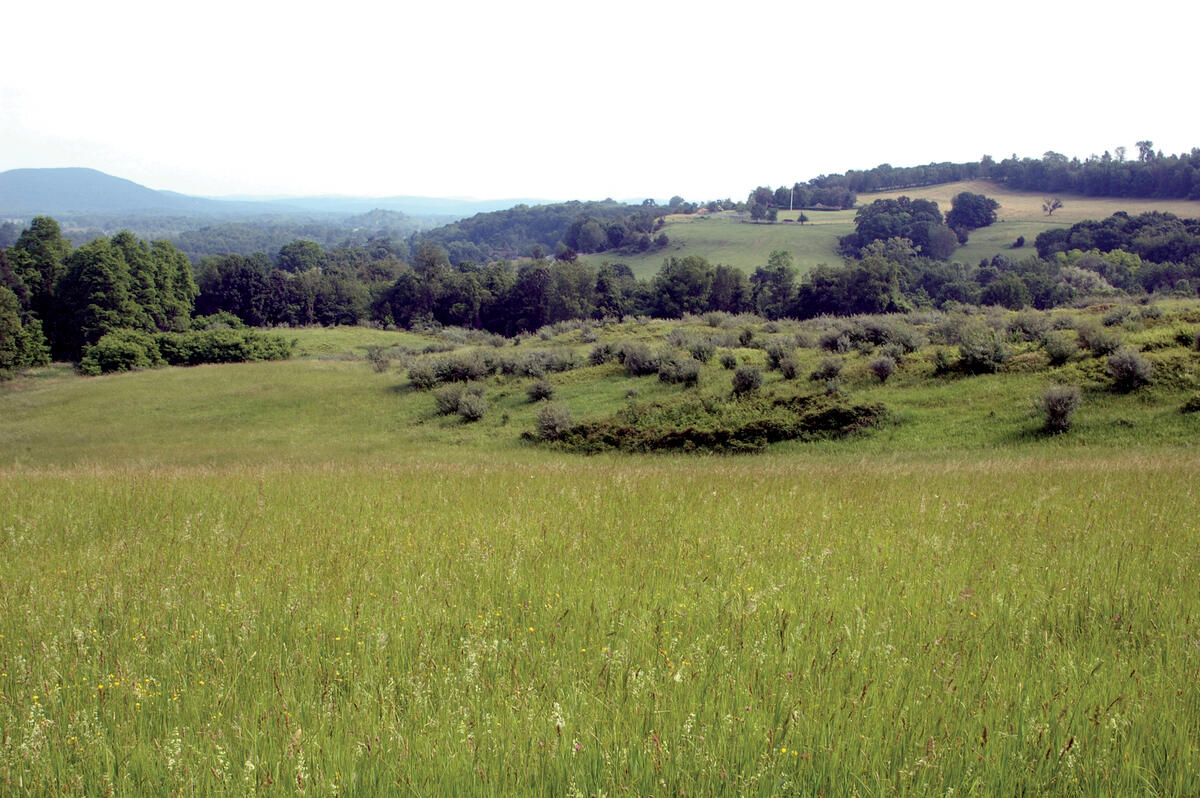
Many ecosystems in upstate New York were created by past human disturbances, such as forest clearing for grazing and agriculture. When economic conditions caused farms to move westward, land was left fallow.
What is succession?
Freed from cultivation, vegetation tends to follow a predictable pattern; ecologists call this process succession. Initially, the landscape is colonized by weedy species. A few years later, invading shrubs and tree seedlings, such as red maple, dominate. Under the shade of these trees, long-lived species such as beech, sugar maple, and hemlock slowly replace the early arrivals.
Ecologists have a variety of theories about what controls the pattern of succession. By fostering the development of soil characteristics, such as a deep litter layer, some early arrivals create the conditions favored by later colonists. Because they are shade-tolerant, later species can establish and reproduce under the canopy provided by early arrivals. Many early arrivals have wind-blown seeds that disperse rapidly over large areas; later species, such as oaks, have heavy acorns that require animals for dispersal.
Why is understanding it important?
Understanding succession has practical applications. Electric and cable utilities are interested in slowing succession under power lines, to reduce the need to spray herbicides or cut back vegetation. Foresters, on the other hand, are often interested in speeding succession, so that desirable hardwood species reestablish rapidly on cleared land. Wildlife biologists are also concerned with the pace of succession; certain species, such as the American woodcock, require shrubby habitats and cannot thrive in dense forests.
Look around and observe the signs
As you walk through Cary Institute’s property, you will see land in various states of succession. Even in established forests, you will come across the telltale signs of a fence post or an old stone wall, indicating that the area was once part of a farm.
What type of vegetation do you predict will dominate the site next? Compare the canopy trees to the seedlings growing in the understory. And visit our Deer Browse kiosk, on Wappinger Creek Trail, to learn about how ungulate appetites can shape the future forest.

